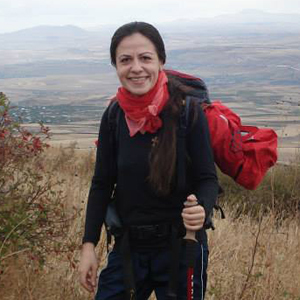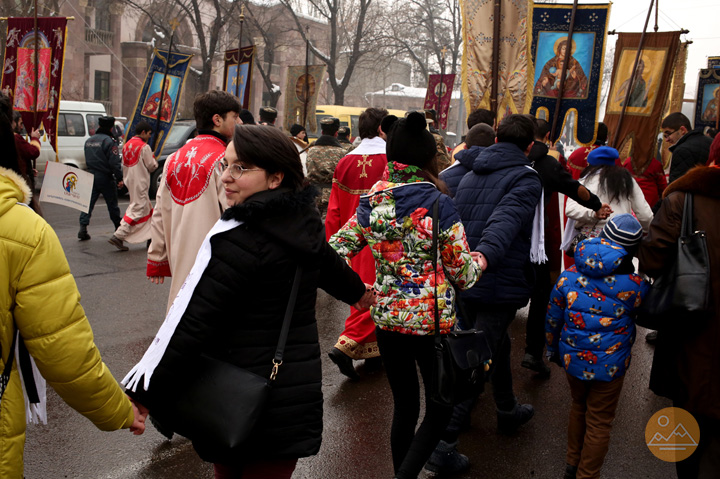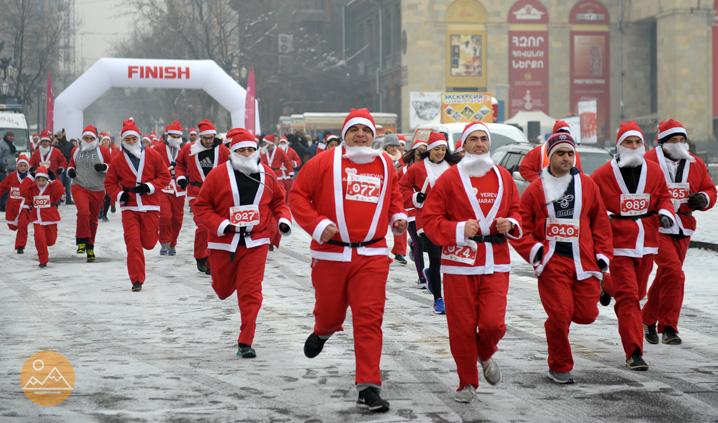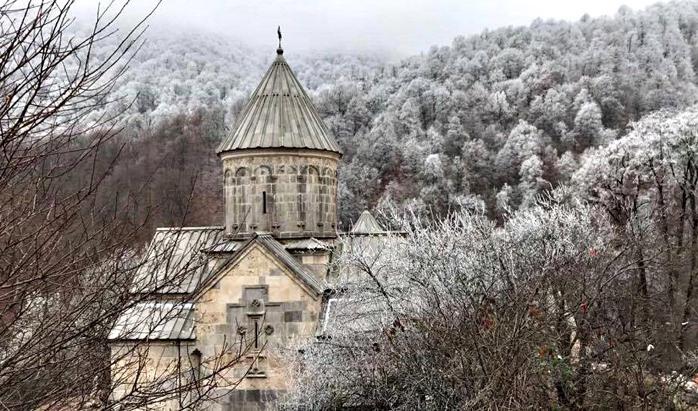-
 Lilit Grigoryan
Lilit Grigoryan

Celebration of the Feast of Saint Sarkis in Yerevan / Photo: Narek Aleksanyan
Feast of Saint Sarkis - the Patron of Youth and Love
Views - 12049
If you visit the Saint Sarkis monastery in the village of Ushi in Aragatsotn province of Armenia on one particular day of the year, you'll see many pilgrims paying homage to Saint Sarkis the Warrior, upon whose relics the monastery was built. That particular day is the Feast of Saint Sarkis the Warrior, one of the most beloved holidays of Armenian youth. Saint Sarkis is venerated as the Patron of youth and love in Armenia. The feast is celebrated between January 18th and February 23rd, on Saturdays, 63 days before the Easter.

Celebration of the Feast of Saint Sarkis, Armenia / Photo: Narek Aleksanyan
Feast of Saint Sarkis: folk beliefs and traditions
In Armenian folk tradition, Saint Sarkis is a brave and honest warrior, who always helped the poor and innocent people and punished those who were guilty and wicked. The entire world thundered from the clatters of his horse, and snowstorm and blizzard occurred when he twiddled his spear.
The feast of Saint Sarkis is celebrated by people of all ages, but it's the youth that has much expectation from the Saint as they believe that the Patron will pass their prayers for love and marriage to the God.
St. Sarkis the Warrior’s day is celebrated in Armenia not only by liturgical rituals and prayers, but also by a number of folk traditions.

Festive parade on Saint Sarkis Day, Yerevan, Armenia / Photo: Narek Aleksanyan
According to one of the beliefs, on the eve of the feast of St. Sarkis, young people shall eat a small salty patty (“aghi blit”) expecting to see a dream while sleeping. The patty is too salty and makes you very thirsty. But you must not drink any water. It is believed, that in your dream you will see a stranger, or a friend, who will come to quench your thirst. That person is your future spouse. If he, or she offers you water in a golden cup, it is said that your future spouse will be rich. Silver cup means average wealth, while the cup made of copper or clay indicates a poor person.
And the volume of the water in the cup suggested the longevity of the couple’s union. If the cup was full of water – they would live a long life together; if half filled – they would live together half of the life, if the cup was filled with very little water – the union will only last a few years.
Among other customs related to marriage was bird feeding. Early in the morning on Saint Sarkis day, young people feed the birds with crumbs of bread or lavash rolls with khashil (a porridge made from roasted wheat flour particularly prepared for the feast). The direction the bird flies with the crumbs points to the place where the future groom or bride will come from. But if the birds stayed where the crumbs are left that meant the person wasn't going to get married.

The Feast of Saint Sarkis in Yerevan, Armenia / Photo: Narek Aleksanyan
On Friday evening, women place pokhindz (roasted wheat flour made especially for the day) on a tray and put it outside in the front of the door of their homes. Some people may place it in the home, leaving the main door open and hoping that St. Sarkis will visit them and will leave a print of his horse's shoe on pokhindz. On the morning of the next day, all family members rush to the tray to check if Saint Sarkis visited their home, blessing the family. His visit also means that an unmarried person in the family would marry soon.
People do their best to please Saint Sarkis, which often includes doing no hard work during the week preceding the feast. Particularly, they did no laundry, fearing that Saint’s horse would slip on soapy water.
But the kids have the most fun on the day of Saint Sarkis: they climb to the roofs or garrets and bring down socks or pouches expecting to receive gifts. Usually, they never get disappointed as socks and pouches always returned to them with sweets or coins.
Other folk traditions include treating people bearing Sarkis name with high honor – they receive gifts or are being invited to special dinners. Children born on that day may be named Sarkis.

Celebration of the Feast of Saint Sarkis, Armenia / Photo: Narek Aleksanyan
During the two weeks between the feast of Saint Sarkis and the Great Lent, a large number of wedding celebrations is taking place. With the start of the Great Lent, the curtains of the church altars are closed, and no wedding ceremonies take place. Thus, the couples who hurry to marry, arrange their wedding during the feast of Saint Sarkis, otherwise they'll have to wait for 48 days until the Great Lent ends.
By the order of His Holiness Karekin II, Supreme Patriarch and Catholicos of All Armenians, St. Sarkis the Warrior’s feast is a day of blessing the youth. At the end of Divine Liturgy, young people are invited to come closer to the altar and a blessing service takes place.
On the feast day there is also a procession that brings a relic of the saint from Mother See Holy Etchmiadzin Cathedral to Saint Sarkis church in Yerevan. For more than 11 years, the celebration of the feast includes cultural activities: exhibitions, concerts, traditional folk events, etc. And in 2017, the feast of Saint Sarkis will be celebrated on February 11.

Relics of Saint Sarkis, Armenia / Photo: Qahana.am
Who is Saint Sarkis?
According to “Haysmavurk” (a medieval Armenian book of Christian holidays, biographies and martyrdoms of saints written in chronological order), Sarkis was a centurion who preached Christianity in Roman Empire in times of Emperor Constantine the Great. But with the persecutions of Christians by Emperor Julian the Apostate, Sarkis and his son Mardiros found refuge in Armenia, from where he joined the army of the Persian Emperor Shapur II who appointed him as the commander of military.

Saint Sarkis / Photo: Narek Aleksanyan
Sarkis continued to preach Christianity, and many soldiers were baptized into Christian faith by the priests who traveled together with him. But Shapur II wanted Sarkis and his followers to worship the fire and make sacrifices in a Zoroastrian temple. Sarkis refused and destroyed several items in the temple. Enraged, the crowd attacked them, and Sarkis' son, Mardiros, was killed in a clash. Shapur II ordered to imprison Sarkis, hoping that he will convert into Zoroastrianism one day, but eventually he was executed, too. 14 Persian soldiers who remained loyal to Sarkis, took care of his body. And later, in V century, Saint Mesrop Mashtots, the creator of the Armenian alphabet, brought the relics of Saint Sarkis to Armenia.










